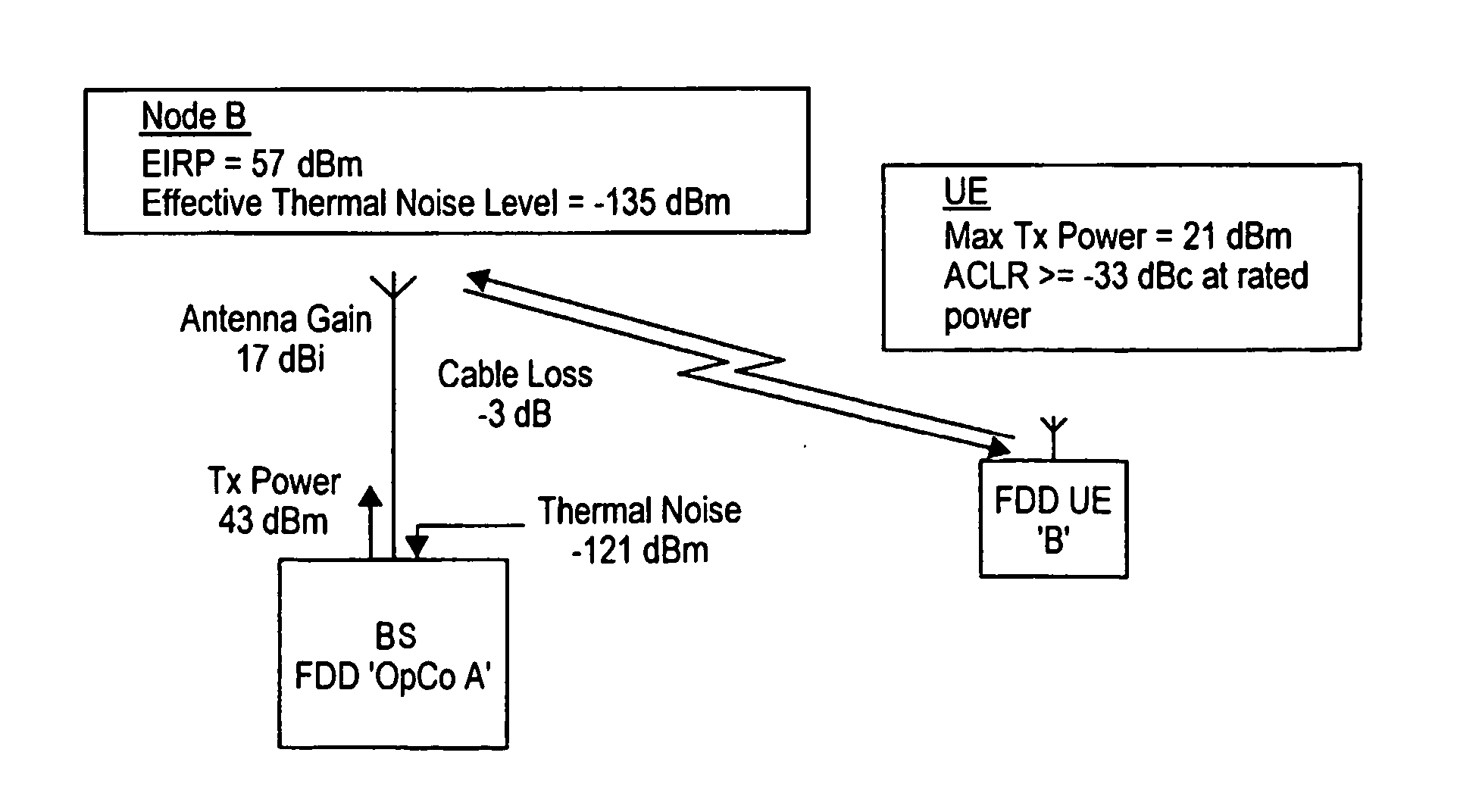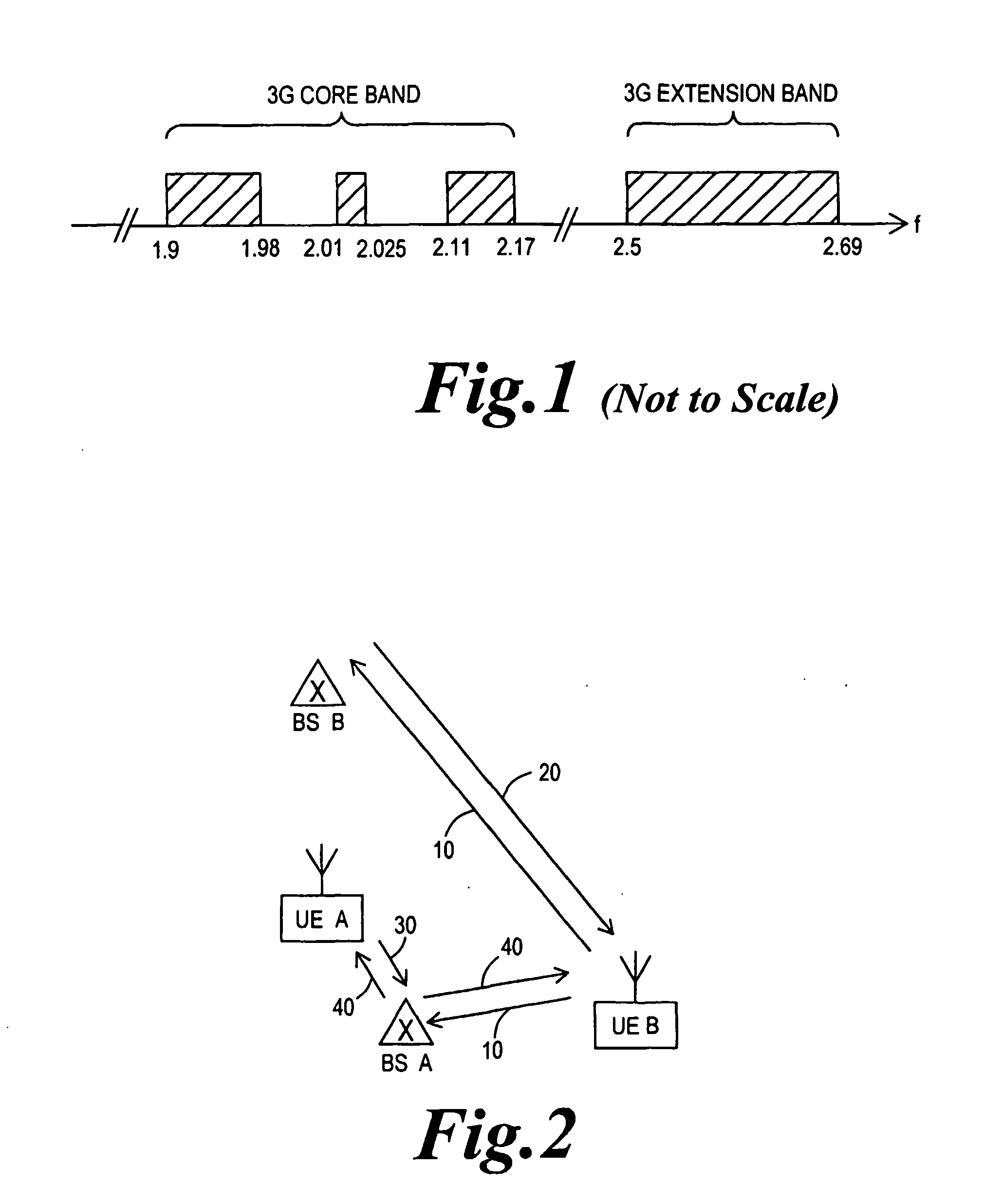Uplink interference reduction in wireless communication systems
- Summary
- Abstract
- Description
- Claims
- Application Information
AI Technical Summary
Benefits of technology
Problems solved by technology
Method used
Image
Examples
Embodiment Construction
[0027]FIG. 2 shows an example wireless communications system with two operators: Operator A and Operator B. Each operator provides their own network infrastructure which includes base stations (BS A, BS B) and an associated backhaul network (not shown). Each operator is allocated a different portion of the overall 3G spectrum. A terminal (user equipment UE B) subscribes to the service provided by operator B. A downlink 20 to the terminal UE B and an uplink 10 to the base station BS B are provided by channels on different frequencies, as shown in FIG. 3. For each operator, the uplink and downlink channels are spaced by a fixed amount, known as the duplex spacing. For the 3G core band the duplex spacing is 190 MHz.
[0028] In order to obtain a better understanding of the present invention, an existing scenario will now be described in more detail with reference to FIGS. 3 and 4. As best shown in FIG. 4, uplink and downlink channels are strictly allocated in pairs (see dashed lines join...
PUM
 Login to View More
Login to View More Abstract
Description
Claims
Application Information
 Login to View More
Login to View More - R&D
- Intellectual Property
- Life Sciences
- Materials
- Tech Scout
- Unparalleled Data Quality
- Higher Quality Content
- 60% Fewer Hallucinations
Browse by: Latest US Patents, China's latest patents, Technical Efficacy Thesaurus, Application Domain, Technology Topic, Popular Technical Reports.
© 2025 PatSnap. All rights reserved.Legal|Privacy policy|Modern Slavery Act Transparency Statement|Sitemap|About US| Contact US: help@patsnap.com



